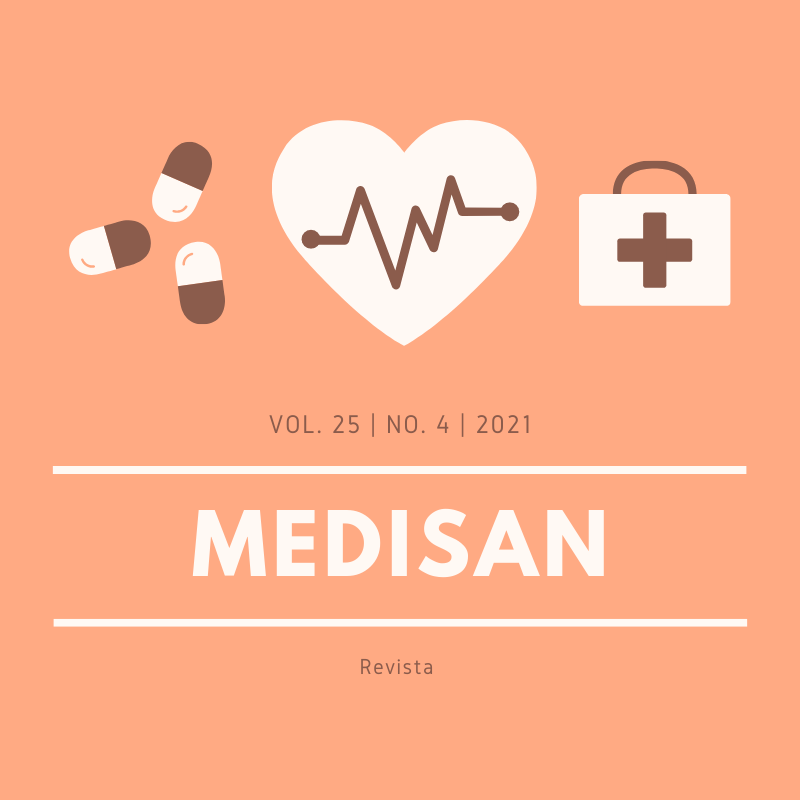Tomographic postoperative findings in patients with thoracic trauma
Keywords:
thoracic trauma, lung contusion, pneumothorax, coagulated hemothorax, reoperation, multidetector computed tomography.Abstract
Introduction: The thoracic trauma is among the first causes of death, fundamentally in young people.
Objectives: To characterize a population operated due to thoracic trauma according to clinical epidemiological variables and describe the postsurgical tomographic findings.
Methods: An observational and descriptive study of 48 patients assisted in the Radiology Service of Saturnino Lora Teaching Clinical Surgical Provincial Hospital was carried out in Santiago de Cuba, from January, 2016 to December, 2018, to whom a multidetector computed tomography was carried out.
Results: The thoracic traumas prevailed in young male people, fundamentally associated with violent actions that caused open traumas. The lung contusion was the most frequent initial tomographic finding, as long as, the persistent pneumothorax and the coagulated hemothorax constituted the most influential tomographic findings in the decision of a surgical reintervention.
Conclusions: Tomography is a diagnostic means that allows a detailed description of the postoperative state in the affected organs, with a high orientative value to decide later surgical procedures.
Downloads
References
2. Meredith H, Trauma thoracic, when and how to intervene? Surg Clin N Am. 2007;87(1):95-118.
3. Rombolá CA, Conde Inarejos B, Almonte García CE, Peyro Sánchez M, Valero Liñán AS, Miota de Llama JI, et al. Neumotórax abierto, ruptura diafragmática, hematoma retroperitoneal y desgarro pulmonar secundarios a traumatismo penetrante tratado por toracoscopiaugía Española. Cir Esp. 2019;97(Espec Congr. 1):1-4.
4. Centro Nacional de Excelencia Tecnológica en Salud. Guía de Práctica Clínica. Diagnóstico y tratamiento del traumatismo de tórax en adultos. México, D.F.: CENETEC; 2017 [citado 26/02/2019]. Disponible en: http://www.cenetec-difusion.com/CMGPC/SS-447-11/ER.pdf
5. Kemmerer WT, Eckert WG, Gathright JB, Reemtsma K, Creech O. Patterns of thoracic injuries in fatal traffic accidents. J Trauma. 1961;1:595-9.
6. Cuba. Ministerio de Salud Pública. Programa Nacional de Prevención de Accidentes. La Habana: MINSAP; 2017.
7. Nazario Dolz AM, Matos Tamayo EM, Falcón Vilarino CG, Ramiro Rodríguez F, Domínguez González EJ, García Orozco L. Características clínicas y terapéuticas de pacientes con hemotórax traumático. Rev Cubana Cir. 2015 [citado 26/02/2019];54(2):96-103. Disponible en: http://www.revcirugia.sld.cu/index.php/cir/article/view/272/105
8. Castillo Payamps RA, Escalona Cartaya JA, Pérez Acosta JR, Rodríguez Fernández Z. Caracterización de los pacientes con traumatismos graves ingresados en un servicio de Cirugía General. MEDISAN. 2016 [citado 13/06/2019];20(1):16-27. Disponible en: http://scielo.sld.cu/scielo.php?script=sci_arttext&pid=S1029-30192016000100004&lng=es
9. González R, Riquelme A, Fuentes A, Saldías R, Reyes R, Seguel E, et al. Traumatismo torácico: caracterización de hospitalizaciones durante tres décadas. Rev Méd Chile. 2018 [citado 13/06/2019];146(2):196-205. Disponible en: https://www.scielo.cl/scielo.php?script=sci_arttext&pid=S0034-98872018000200196
10. Ministerio de Sanidad; Servicio Central de Publicaciones del Gobierno Vasco. Guía de práctica clínica sobre el diagnóstico y tratamiento del traumatismo torácico cerrado no grave. Vitoria-Gasteiz: OSTEBA; 2020.
11. Muñoz de Cabo C, Hermoso Alarza F, Cossio Rodriguez AM, Martín Delgado MC. Manejo perioperatorio en cirugía torácica. Rev Med Intensiva. 2020 [citado 13/06/2019];44(3):185-91. Disponible en: https://medintensiva.org/es-pdf-S0210569119302700
12. García-Hernández C, Carvajal-Figueroa L, Archivaldo-García C, Pique-Aragón C, Landa-Juárez S, Izundegui-Ordoñez G. Utilidad de la tomografía multicorte en el tratamiento quirúrgico del pecho arcuato en niños. Neumol Cir Torax. 2020 [citado 23/04/2020];79(3):176-9. Disponible en: https://www.medigraphic.com/pdfs/neumo/nt-2020/nt203i.pdf
13. Fonseca Muñoz JC, González Aguilera JC, Frómeta Guerra A, Fonseca Muñoz TA. Factores pronósticos de muertes en pacientes politraumatizados. Rev Cubana Med Inter Emerg. 2011;10(3):2199-2209.
14. Jiménez Vizuete JM, Pérez Valdivieso JM, Navarro Suay R, Gómez Garrido M, Monsalve Naharro JA, Peyró García R. Reanimación de control de daños en el paciente adulto con trauma grave. Rev Española Anestesiol Reanim. 2015;59(1):31-42.
15. Kaewlai R, Avery LL, Asrani AV, Novelline RA. Multidetector CT of blunt thoracic trauma. Radiographics. 2008;28:1555-70.
16. Villegas Carlos F, Vázquez Martínez AM, Pinedo Onofre JA, Guevara Torres L, Belmares Taboada JA, Sánchez Aguilar M. Utilidad de los antimicrobianos em la toracostomía cerrada por trauma. Cir Ciruj. 2016;77(1):29-32.
17. Wilson WC, Grande CM, Hoyt DB. Trauma: emergency resuscitation, perioperative anesthesia, surgical management. Vol. 1. Boca Ratón: CRC Press; 2007.
18. Deunk J, Dekker HM, Brink M, van Vugt R, Edwards MJ, van Vugt AB. The value of indicated computed tomography scan of the chest and abdomen in addition to the conventional radiologic work-up for blunt trauma patients. J Trauma. 2007;63(4):757-63.
19. Van Hise ML, Primack SL, Israel RS, Müller NL. CT in blunt chest trauma: indications and limitations. Radiographics. 1998;18(5):1071-84.
Published
How to Cite
Issue
Section
License
All the articles can be downloaded or read for free. The journal does not charge any amount of money to the authors for the reception, edition or the publication of the articles, making the whole process completely free. Medisan has no embargo period and it is published under the license of Creative Commons, International Non Commercial Recognition 4.0, which authorizes the copy, reproduction and the total or partial distribution of the articles in any format or platform, with the conditions of citing the source of information and not to be used for profitable purposes.





